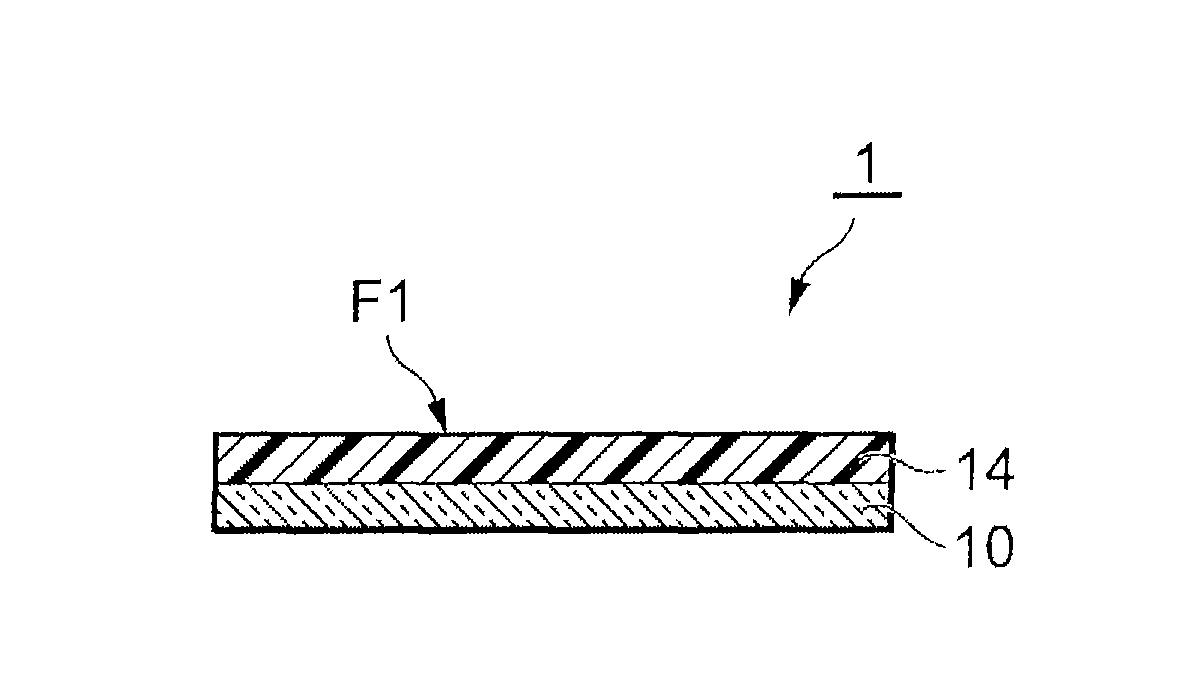Photosensitive resin composition, photosensitive element, method of forming resist pattern, and process for producing printed wiring board
A resin composition and photosensitivity technology, which is applied in the direction of printed circuit manufacturing, printed circuit, photoplate making process of patterned surface, etc., can solve the problems of reducing the performance of resist, entrapment of air, messy resist image, etc. To achieve the effect of excellent electrical characteristics
- Summary
- Abstract
- Description
- Claims
- Application Information
AI Technical Summary
Problems solved by technology
Method used
Image
Examples
Embodiment
[0193] The present invention will be described more specifically below based on Examples and Comparative Examples, but the present invention is not limited to the following Examples.
Synthetic example 1
[0195] Add YDF2001 (manufactured by Dongdu Chemical Co., Ltd., bisphenol F type epoxy resin, Y in general formula (6) 2 = glycidyl, R 12 = hydrogen atom compound) 475 mass parts, acrylic acid 72 mass parts, hydroquinone 0.5 mass parts, carbitol acetate 120 mass parts, heated and stirred at 90 degreeC, and dissolved the reaction mixture. Next, the obtained solution was cooled to 60 degreeC, 2 mass parts of benzyltrimethylammonium chlorides were added thereto, and it heated at 100 degreeC and was made to react until the solid content acid value was 1 mgKOH / g. Furthermore, 98 mass parts of maleic anhydrides and 85 mass parts of carbitol acetates were added, and it heated at 80 degreeC and was made to react for about 6 hours. Subsequently, it was cooled to room temperature and diluted to a solid content concentration of 60% by mass with carbitol acetate to obtain a carboxylic acid-modified bisphenol F type epoxy acrylate (hereinafter referred to as "epoxy resin A1") as (A) compon...
Synthetic example 2
[0197] Add YDCN704 (manufactured by Dongdu Chemical Co., Ltd., cresol novolak type epoxy resin, Y in general formula (5) 1 = glycidyl, R 11 =Methyl compound) 220 mass parts, acrylic acid 72 mass parts, hydroquinone 1.0 mass parts, carbitol acetate 180 mass parts, heated and stirred at 90 degreeC, and dissolved the reaction mixture. Next, the obtained solution was cooled to 60 degreeC, 1 mass part of benzyltrimethylammonium chloride was added to this, and it heated at 100 degreeC and was made to react until the solid content acid value was 1 mgKOH / g. Furthermore, 152 mass parts of tetrahydrophthalic anhydrides and 100 mass parts of carbitol acetates were added, and it heated at 80 degreeC and was made to react for about 6 hours. Subsequently, it was cooled to room temperature and diluted to a solid content concentration of 60% by mass with carbitol acetate to obtain a carboxylic acid-modified cresol novolak type epoxy acrylate (hereinafter referred to as "epoxy resin") as (A) ...
PUM
| Property | Measurement | Unit |
|---|---|---|
| wavelength | aaaaa | aaaaa |
| acid value | aaaaa | aaaaa |
| acid value | aaaaa | aaaaa |
Abstract
Description
Claims
Application Information
 Login to View More
Login to View More - R&D
- Intellectual Property
- Life Sciences
- Materials
- Tech Scout
- Unparalleled Data Quality
- Higher Quality Content
- 60% Fewer Hallucinations
Browse by: Latest US Patents, China's latest patents, Technical Efficacy Thesaurus, Application Domain, Technology Topic, Popular Technical Reports.
© 2025 PatSnap. All rights reserved.Legal|Privacy policy|Modern Slavery Act Transparency Statement|Sitemap|About US| Contact US: help@patsnap.com



